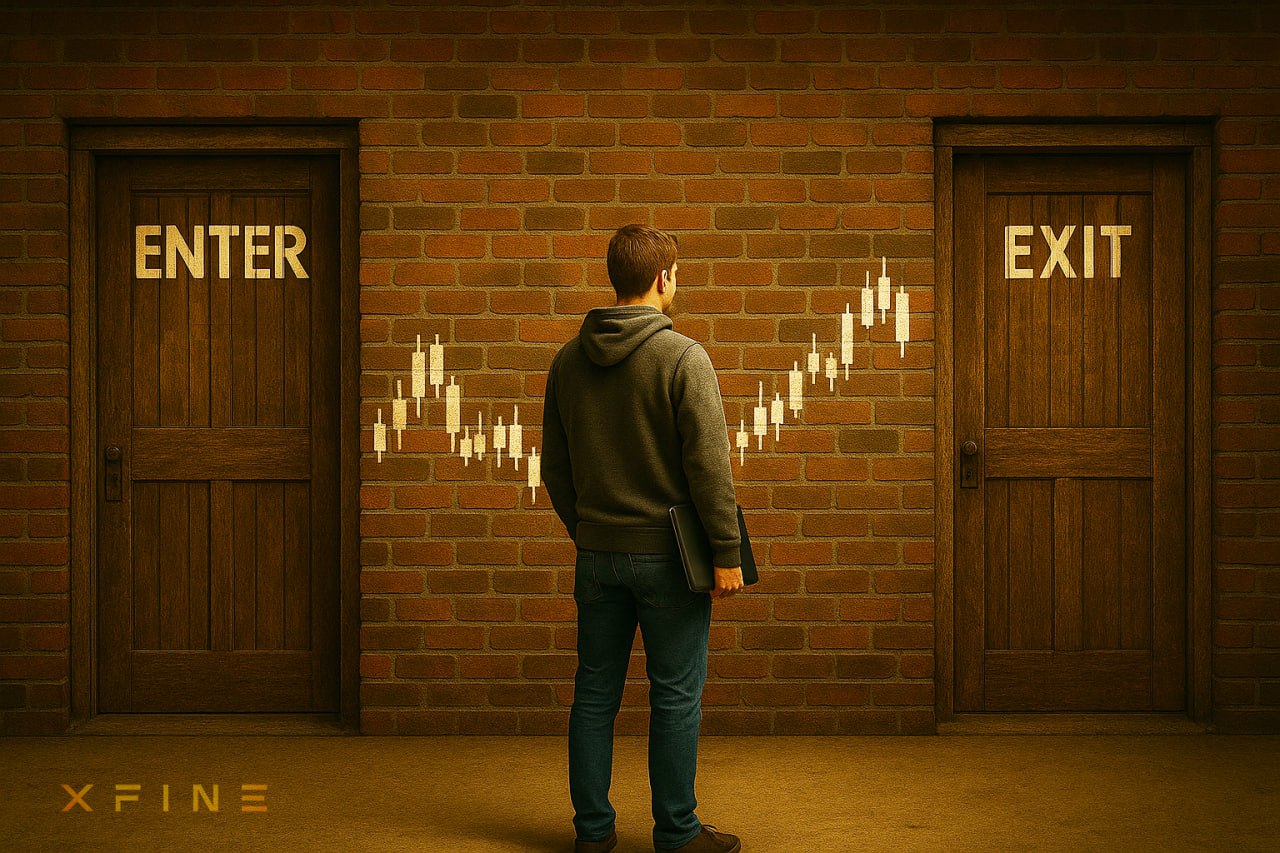
Understanding which criteria to use for entering and exiting trades has long been a subject of lively debate within the trading community. As part of a recent study, XFINE analysts examined the experience of traders operating in the forex, stock, and cryptocurrency markets to identify the patterns and practices that truly determine the success of trading decisions. The focus was not on specific strategies, but rather on the criteria traders themselves consider decisive when making entry and exit decisions.
The results showed that many novice traders tend to rely excessively on technical indicators, hoping to find a universal signal. Experienced participants, however, emphasise that an indicator merely reflects the past state of the market, while an entry always implies a forecast of future price movement. Traders who have lived through more than one market cycle often rely on a combination of factors — the technical picture, fundamental events, and the overall news background. Crucially, it is not the set of tools that matters most, but the context in which they are applied. As noted by XFINE, many successful traders pay particular attention to the risk-to-reward ratio at the time of entry, considering this parameter more important than any single indicator signal.
Interestingly, most respondents pointed to the need for confirmation from multiple sources. For instance, if technical analysis indicates growth, traders tend to wait for fundamental or at least news-based confirmation to minimise the risk of a false entry. Some participants admitted they would even refrain from trading despite a seemingly “perfect” setup if liquidity was lacking or uncertainty in correlated markets was too high. This once again highlights that an entry criterion is formed not in isolation, but within the broader framework of market expectations.
Exiting a trade is traditionally seen as a more complex process than entering one. While an entry point is often tied to a specific pattern or indicator, the decision to close a position largely depends on the market’s dynamics after it is opened. The key criterion here is not only achieving the target but also the ability to admit a mistake in time. Traders participating in the study stressed that a pre-set stop-loss remains the most reliable tool for loss control. At the same time, growing attention is paid to the psychological aspect — the discipline and patience not to exit a profitable position too early. According to XFINE, premature exits from winning trades are among the main reasons for lost profits among most respondents.
The study also revealed notable differences between short-term and long-term traders. Scalpers and day traders often close positions after achieving modest goals but compensate for it through trade frequency, achieving high cumulative returns. For them, the exit criterion is not the broader market movement, but the completion of a local price scenario. Position traders, on the other hand, may hold positions for weeks, focusing on fundamental trends. They rely on a clear set of macroeconomic indicators as exit signals — for example, changes in monetary policy or shifts in corporate reporting.
Another interesting layer of findings concerned emotional criteria. Many traders admitted to closing positions when they began to feel excessive stress or inner discomfort. While this subjective approach is often criticised, it also serves as a mechanism of capital protection: once a trader loses emotional control, the probability of error increases sharply. XFINE experts believe that such a criterion can be viewed as an additional risk management tool, particularly for traders with limited experience.
Thus, the research demonstrated that there are no universal criteria for entry and exit, yet most successful traders adhere to similar principles. Entry should be based on understanding market structure and maintaining a sound risk-to-reward ratio, while exit should rely on pre-defined levels of profit and loss, supported by discipline and self-control. The choice of instruments plays a secondary role, giving way to sound capital management and emotional resilience.
XFINE’s research suggests that trading remains an art of balance between calculation and probability. Entering a trade is always a hypothesis about the future, while exiting it is a test of that hypothesis. The key to success lies not in searching for a universal indicator, but in the ability to combine objective analysis with discipline, adapting one’s criteria to their individual trading style.